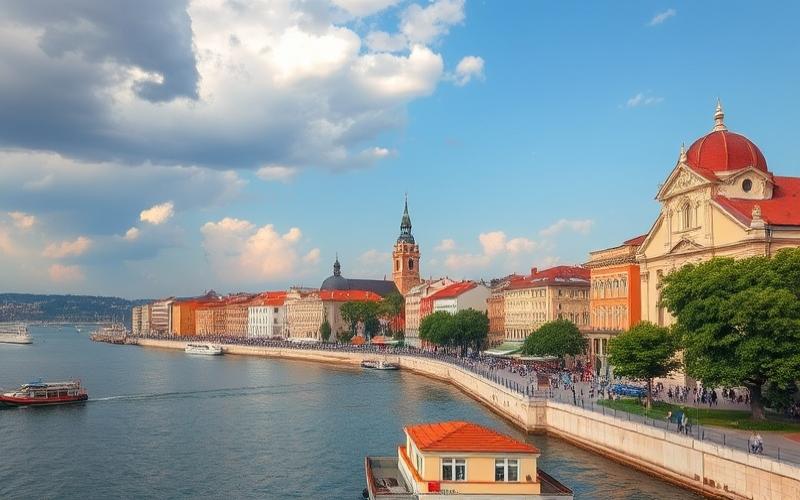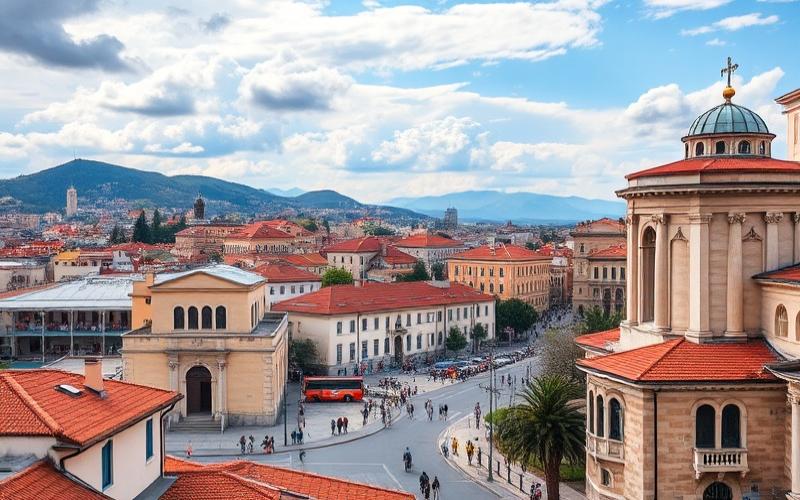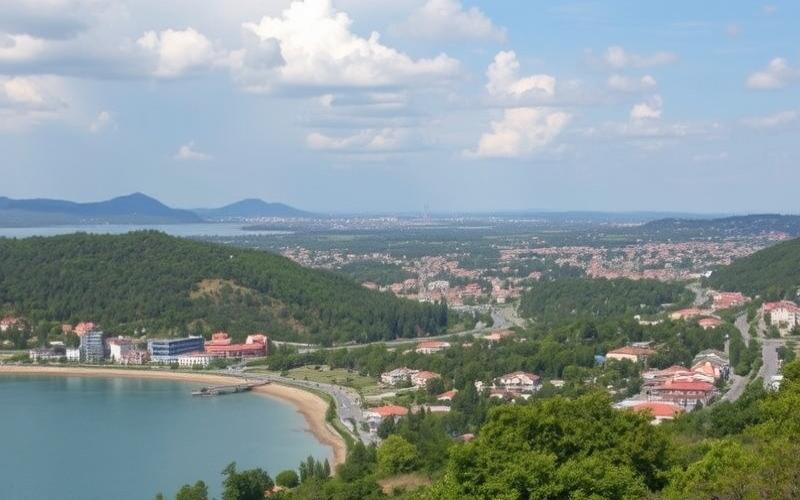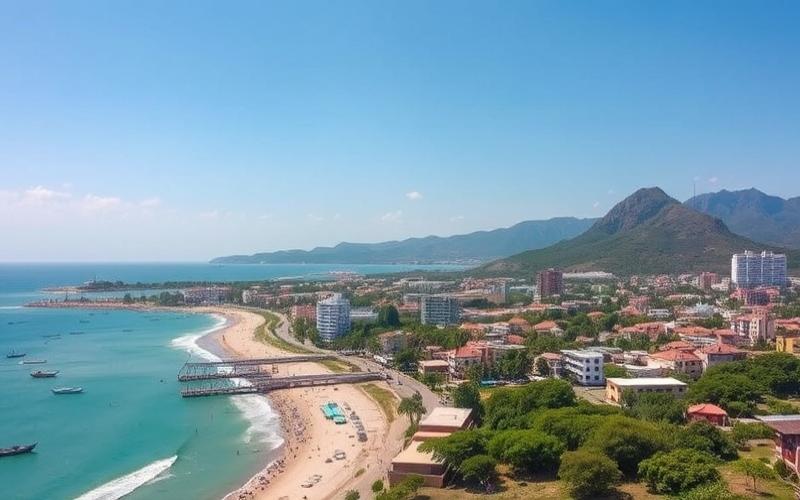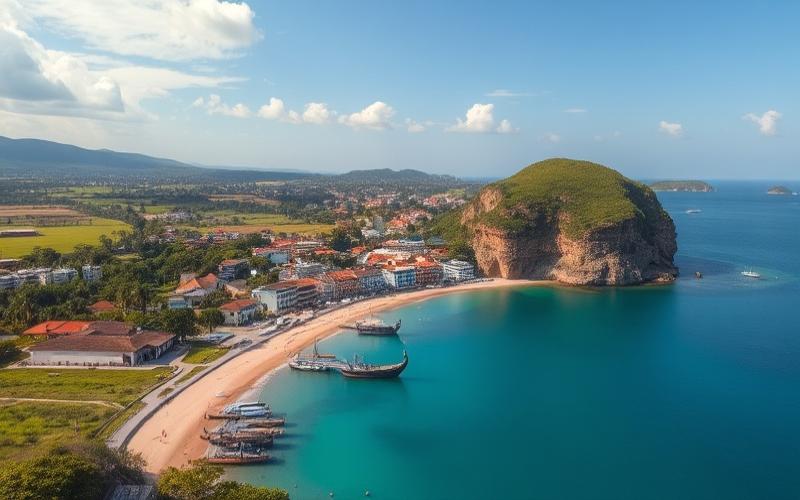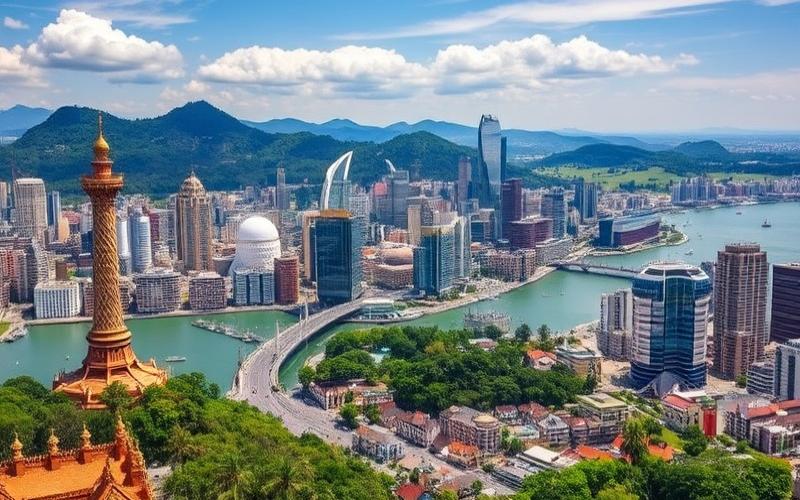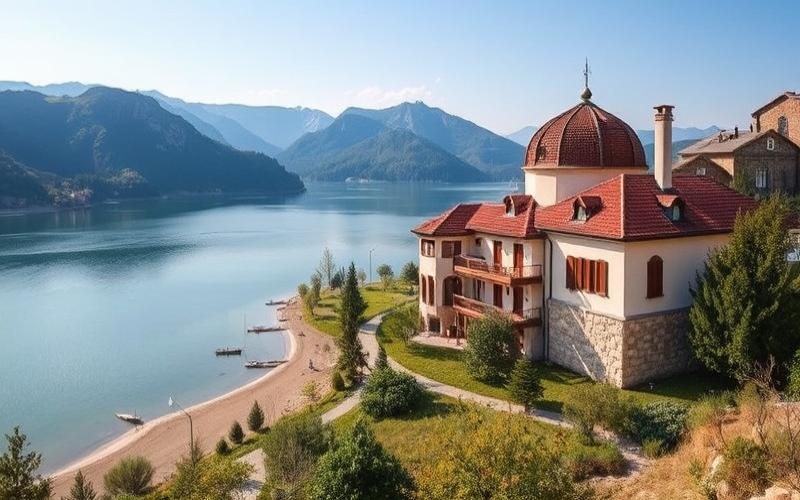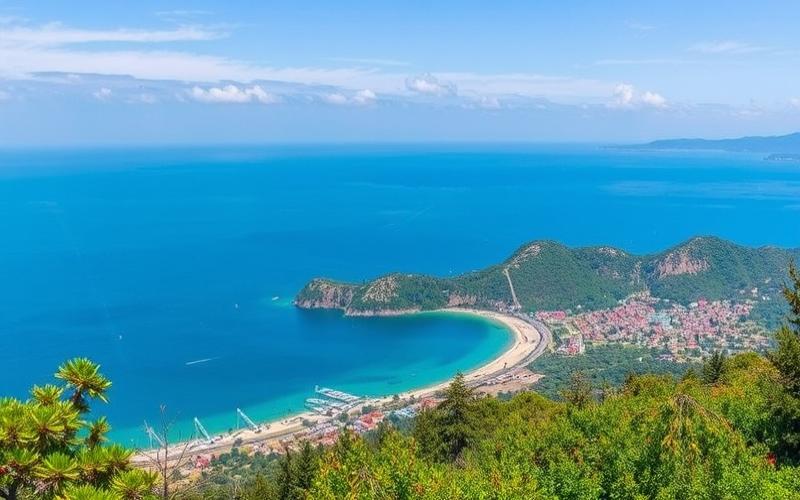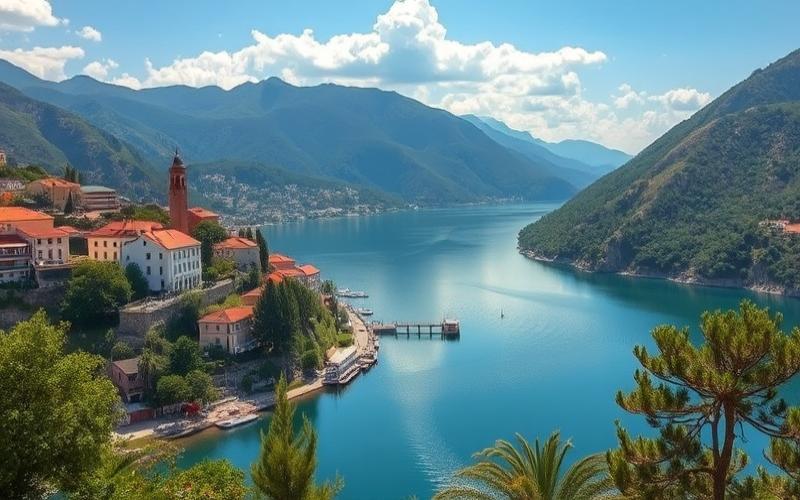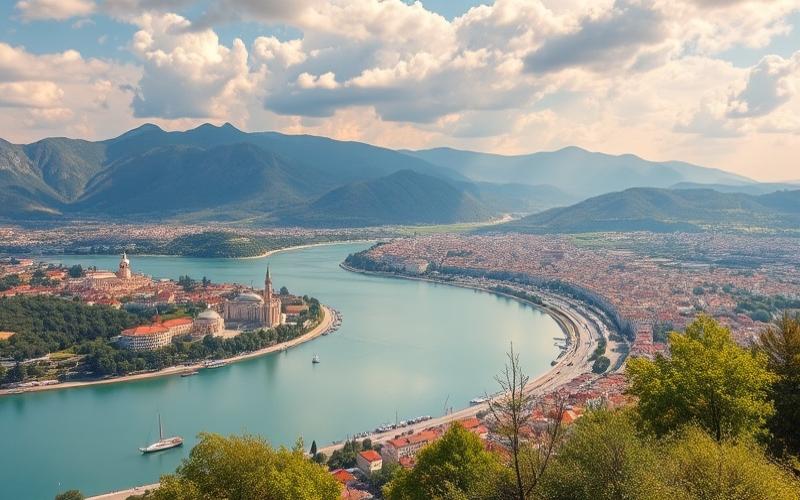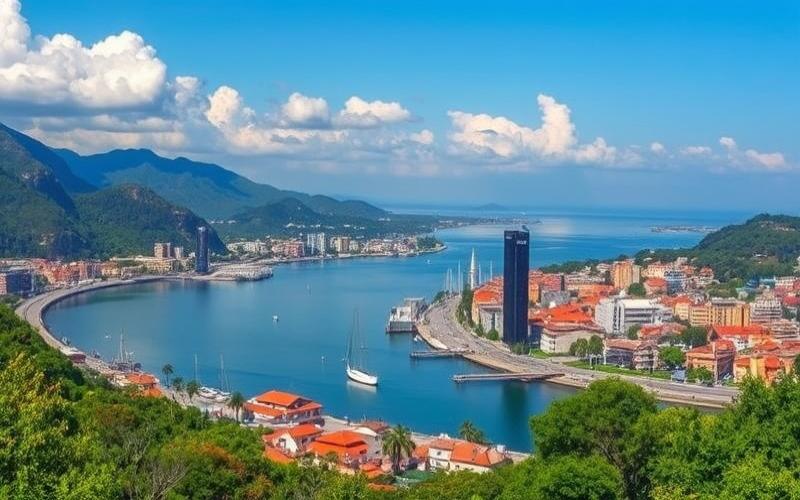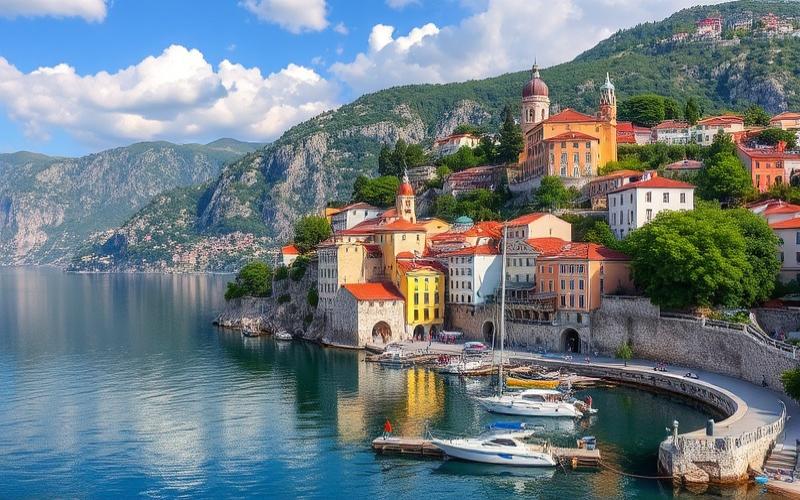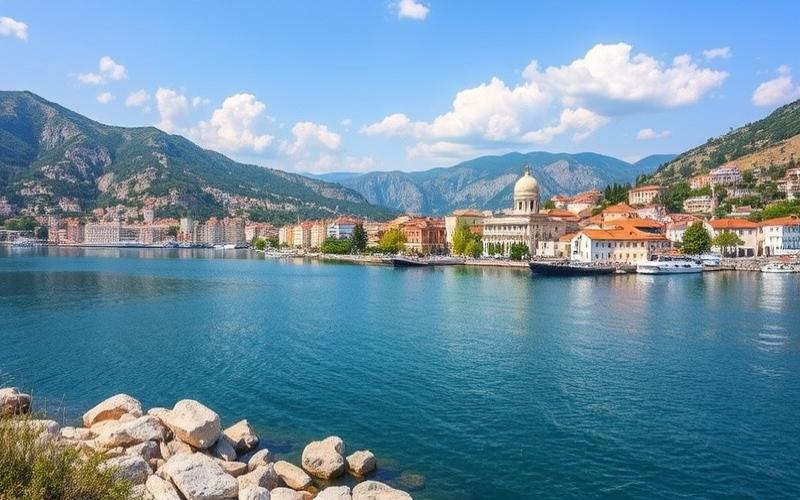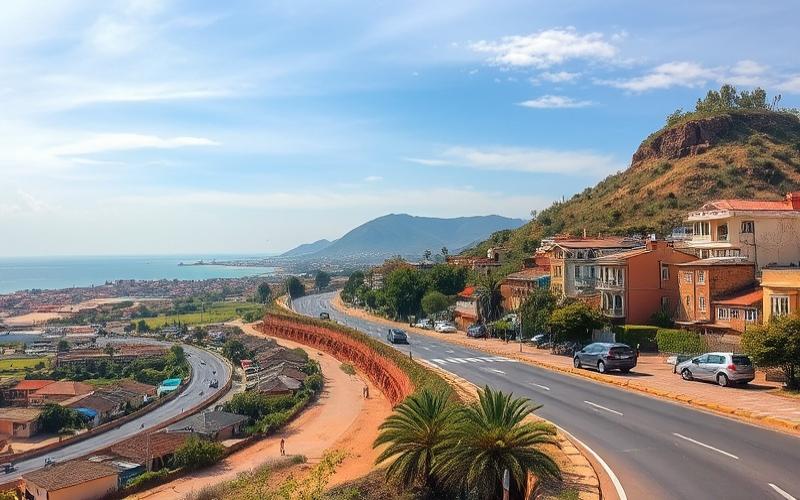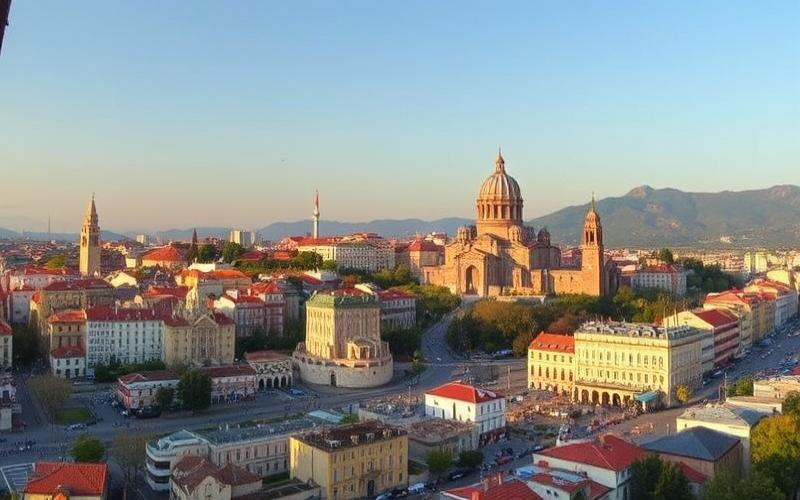
 Published on and written by Cyril Jarnias
Published on and written by Cyril Jarnias
Investing in Parking Lots in North Macedonia: A Profitable Opportunity
Investing in parking lots in North Macedonia represents an often underestimated opportunity, offering remarkable profitability potential. This dynamic country in Southeastern Europe, experiencing robust economic growth, is seeing increased demand for parking spaces, particularly in its developing urban areas.
While the relatively low real estate costs facilitate market entry, infrastructure modernization further enhances the potential returns on investments. By exploring this sector, you’ll discover how an expanding market and attractive returns on investment make parking facilities a wise choice for diversifying and securing your investment portfolio.
Good to Know:
North Macedonia benefits from sustained economic growth and a regulatory framework favorable to foreign investment, making it an attractive market for real estate investors.
Introduction to Parking Lot Investment in North Macedonia
The parking lot market in North Macedonia is directly influenced by rapid urban growth and the increasing number of vehicles, particularly in major urban centers. Sustained urbanization and accelerated economic development are driving demand for structured parking solutions, especially in city centers where space is limited.
Economic factors favoring this sector include:
- Consistent growth in national GDP over several years.
- Continuous increase in urban vehicle ownership rates.
- Public investments in urban infrastructure to support city modernization.
On the legislative front, the regulatory framework has evolved to encourage private investment:
- Adoption of policies facilitating public-private partnerships (PPP) for parking management and operation.
- Regulations on accessibility and safety, encouraging renovation or creation of new spaces compliant with European standards.
- Occasional tax incentives for operators investing in environmentally friendly infrastructure.
Key cities with maximum profitability potential are:
| City | Main Advantages | Strategic Locations |
|---|---|---|
| Skopje | Economic and political capital | City center, business districts |
| Bitola | Major industrial hub | Central station, commercial areas |
| Tetovo | Dynamic demographic growth | Universities, residential areas |
| Ohrid | International tourist destination | Lakeside, historic center |
Preferred strategic locations:
- Immediate proximity to shopping centers
- Administrative districts
- Major tourist sites
- Railway and bus stations
Recent observed trends:
- Growing digitalization: massive deployment of mobile applications for contactless payment and remote booking.
- Sustainable development: increasing integration of green spaces around or on parking lot roofs; gradual installation of electric charging stations for clean vehicles.
- New customer expectations: increased demand for flexible offers (hourly/daily subscriptions), enhanced security (advanced video surveillance).
Future perspectives:
Demand is expected to continue growing with an estimated annual rate between 4% and 6% according to local projections. The market will be stimulated by post-pandemic international tourism as well as national policies encouraging sustainable urban mobility.
Relevant statistical data (according to local sector data):
- Average daily occupancy rate in Skopje: over 85% during peak hours;
- Over 60% of urban drivers report regularly encountering parking space shortages;
- Annual revenues generated by the sector locally exceed several million euros in main city centers.
North Macedonia therefore offers attractive ground for any investor looking to capitalize on a rapidly structuring market driven by urban dynamics.
Good to Know:
In North Macedonia, investing in parking lots proves lucrative due to rapid urbanization growth, particularly in Skopje, where parking demand often exceeds supply. Cities like Bitola and Ohrid are also worth watching for their growing tourism potential. Favorable policies, such as tax incentives and simplified administrative procedures, support foreign investments. According to a recent study, the parking market growth rate is expected to reach 7% annually due to increasing vehicle numbers and improved road infrastructure. It’s advisable to target locations near shopping centers and business hubs to ensure maximum profitability and to follow digital trends, such as parking reservation apps, to attract more users.
Parking Space Profitability Analysis
Rapid urbanization in North Macedonia, particularly in major cities like Skopje, is accompanied by sustained growth in the vehicle fleet. This dynamic creates increasing pressure on parking demand, both for residents and businesses.
Parking space supply isn’t keeping pace with vehicle growth, creating an imbalance that makes these spaces particularly sought-after and opens up attractive investment opportunities.
Comparative Table of Average Prices (2025)
| Real Estate Asset Type | Average Purchase Price (€/m²) | Average Rent (€/m²/month) | Estimated Gross Rental Yield |
| City Center Apartment | 1,783 – 1,867 | ~6.4 | 4–6% |
| Underground City Center Parking | 7,000 – 15,000* | ~50–90* | Up to 7–9%* |
*Indicative data from local market and European trends; few official statistics dedicated to parking.
Recent Evolution:
- The average price per square meter in urban areas has increased to 1,867 €/m² (+5.6% year-over-year).
- The minimum observed price is around 1,072 €, maximum up to 2,500 € depending on the city.
List of Factors Influencing Future Profitability:
- Advantageous taxation: low taxation (corporate tax approximately 10%) and potential exemptions in certain free economic zones.
- Legislative reforms facilitating foreign investment and administrative simplification.
- Local initiatives promoting sustainable mobility: gradual development of public transport or encouragement of bicycle use that could eventually limit demand for traditional parking.
- Risk related to potential saturation if new constructions systematically include more spaces or if anti-car policies become predominant.
Associated Costs:
- Purchase: initial cost between 7,000 € and over 15,000 € for a well-located private space.
- Moderate annual maintenance (~50–150 €/year), mainly condominium fees or technical maintenance for automated parking facilities.
Income Opportunities:
- Frequent monthly rental between 50 € and sometimes more depending on strategic location.
Comparison with Other Real Estate Investments:
Parking often offers higher gross rental yields than traditional apartments due to lower entry costs, less maintenance, fewer potential payment defaults, but remains exposed to urban regulatory developments.
General Recommendations for Investors:
Diversify your portfolio with several strategic locations
Prioritize city centers or areas near economic/administrative hubs
Closely monitor local regulatory developments on parking
Anticipate possible changes related to sustainable mobility
Plan for easy resale thanks to likely maintained supply-demand tension in city centers
Recommended Risk Management in Simple Steps:
- Carefully evaluate each urban micro-market before acquisition.
- Prioritize covered/surveilled locations to limit rental vacancy.
- Stay regularly informed about municipal plans concerning public transport or car restrictions.
In summary: despite certain risks related to future environmental policies, the Macedonian market remains favorable today for investments in the urban parking sector.
Good to Know:
With rapid urban growth and increasing vehicle numbers in North Macedonia, demand for parking spaces continues to rise, presenting an interesting opportunity for investors. Currently, the average price for a parking space in urban areas is around 5,000 to 7,000 €, with rental yields around 5 to 7%, compared to residential real estate which averages around 4%. However, initial purchase costs and maintenance expenses, such as local taxes and potential renovations, must be carefully evaluated to ensure sustainable profitability. Local policies promoting sustainable mobility could reduce car dependency and thus influence long-term parking demand. Temporary tax incentives and low-emission zones could also alter the appeal of certain locations. Potential investors should diversify their portfolio and closely monitor economic and political trends to mitigate risks.
Factors Influencing Parking Lot Returns
Current economic trends in North Macedonia are characterized by sustained growth, with GDP rising 4.2% in 2024 and positive forecasts for coming years (estimated growth of 3.7% for 2025 and 3.5% for 2026). This dynamic is driven by increased foreign investment, rising purchasing power (wage increases and unemployment reduction), and enhanced urban infrastructure development. Rapid urbanization leads to increased vehicle traffic, which intensifies pressure on parking capacity in major cities.
Geographic factors play an essential role in parking lot returns:
- Immediate proximity to shopping centers
- Location in or near business districts
- Accessibility from residential neighborhoods
- Connection to modernized road networks thanks to recent infrastructure projects
Strategic location directly influences occupancy rates and profitability.
On the regulatory and political front, several elements impact operations:
- Implementation of urban policies aimed at optimizing parking supply (blue zones/residential areas)
- Potential tax incentives to encourage investments in modern infrastructure
- Gradual harmonization with European standards promoting innovation and sustainable management
The growing impact of technological innovations is profoundly changing management:
- Widespread introduction of online reservation systems allowing better demand anticipation
- Increased installation of electric vehicle charging stations to attract new customers
- Partial or total automation (contactless payment, smart guidance)
Key indicators regarding demand and supply in major cities:
| City | Average Occupancy Rate (%) | Place Deficit/Surplus | High-Pressure Zones |
|---|---|---|---|
| Skopje | >80 | Deficit | City Center/Business |
| Bitola | ~70 | Slight Deficit | Commercial/Residential |
| Tetovo | ~60 | Balance | Universities |
Main financial implications include:
- High fixed costs related to regular maintenance (cleaning, technical security)
- Additional costs due to technology integration (software/hardware)
- Average vacancy rates influenced by seasonality or new competition
Summary list of these financial factors:
- Recurrent charges: structural maintenance / personnel / security
- Occasional investments: compliance upgrades / electric charging stations
- Variable revenues depending on annual traffic
Regarding future economic perspectives, continuous improvement in the national economic climate should sustainably support demand. Progressive European integration also favors an attractive environment for private investors. However, maintaining controlled inflation remains crucial so that purchasing power doesn’t indirectly hinder paid usage.
- Future profitability will therefore largely depend on:
- The sustained pace of urban modernization
- Rapid adaptation to digital innovations
- Flexible pricing policies in the face of growing competition
Good to Know:
Parking lot returns in North Macedonia are influenced by various dynamics, such as rapid urban growth and increasing vehicle traffic, thus stimulating demand for strategically located parking spaces near shopping centers, business districts, and residential neighborhoods. Local urban parking policies, supported by tax incentives, can also play a crucial role in affecting profitability, as can recurring maintenance expenses and vacancy rates. The rise of management technologies, such as online reservation systems and electric vehicle charging stations, offers new opportunities to improve returns, particularly in the country’s main cities. Moreover, as the national economy evolves, with future economic perspectives to monitor closely, these parking infrastructure investments could offer competitive financial returns if well-positioned and managed.
Strategies to Optimize Parking Investment
Analyzing locations with high development potential in North Macedonia involves primarily targeting Skopje and the Northwestern urban arc (Tetovo, Gostivar), which concentrate demographic growth and benefit from major infrastructure projects like highway and railway network development. The capital attracts a significant portion of the urban population, particularly due to expatriate arrivals and economic dynamism linked to recent public investments in real estate and urban infrastructure. Medium-sized cities such as Bitola, Prilep, Štip, or Strumica also present interest but show less marked dynamics than Skopje or the Polog region.
To evaluate local parking market trends:
- Examine seasonal demand, particularly during tourist periods when influx increases in city centers.
- Observe user preferences: proximity to public transport, enhanced security, availability of electric vehicle charging stations.
- Study local pricing practices to adapt your offering according to zone (city center vs. periphery) and user type (residential, professional, or tourist).
Diversifying parking types allows response to different segments:
| Type | Advantages | Target Usage |
|---|---|---|
| Underground | Optimizes urban space; protects against weather | Densely built city centers |
| Above-ground (surface or multi-level) | Lower initial investment; flexibility | Rapidly expanding neighborhoods |
| Automated/robotic | Maximum space efficiency; attractive for premium/innovative clientele | Proximity to economic hubs |
Diversification thus not only increases annual occupancy rates but also maximizes yield per square meter utilized.
Collaborations with local businesses (real estate developers, urban managers) and municipal agencies are essential to:
- Access strategic land,
- Facilitate administrative procedures,
- Obtain privileged information about future urban developments,
- Enhance local presence with end users.
Integration of advanced technologies constitutes a major lever:
- Smart systems for parking management enabling online reservations, contactless payment, or dynamic guidance to available spaces.
- IoT sensors to monitor occupancy rates in real time
- Connected electric charging stations, adapted to the gradual rise of electric vehicles
These solutions significantly improve user experience, reduce operational costs through administrative/logistical automation.
Adapted financing strategies:
- For local investors: recourse to conventional bank loans with potentially preferential rates through government programs dedicated to sustainable urban development.
- For international investors: public-private partnerships encouraged by various European bilateral agreements facilitating access to the Macedonian market; possible co-financing through European funds like those mobilized under the economic plan for the Western Balkans.
Potential government incentives/subsidies:
“Government incentive programs” targeting green/smart infrastructure
European subsidies accelerating preparation/implementation of projects related to urban ecological transition
Summary list – practical advice:
- Target densely populated areas benefiting from/soon to benefit from structural investments
- Diversify formats offered according to specific neighborhood/zone needs
- Build strong alliances with local institutional actors
- Integrate innovative technological tools from the design phase
- Mobilize hybrid financing while monitoring national/European incentive schemes
Good to Know:
To optimize parking investment in North Macedonia, it’s crucial to target locations with high potential, considering urban expansion and infrastructure projects, such as new commercial zones or residential developments. Analyze the local market to identify seasonal demand and user preferences, while keeping an eye on prevailing pricing. Diversify the types of parking offered, including underground, above-ground, and automated options to meet different user needs and maximize revenue. Partnering with local businesses and municipal agencies can secure strategic investment zones. Integrate smart parking management technologies to improve user experience and increase operational efficiency. In terms of financing, explore local and international options while seeking potential government subsidies that could facilitate your investments.
Disclaimer: The information provided on this website is for informational purposes only and does not constitute financial, legal, or professional advice. We encourage you to consult qualified experts before making any investment, real estate, or expatriation decisions. Although we strive to maintain up-to-date and accurate information, we do not guarantee the completeness, accuracy, or timeliness of the proposed content. As investment and expatriation involve risks, we disclaim any liability for potential losses or damages arising from the use of this site. Your use of this site confirms your acceptance of these terms and your understanding of the associated risks.



